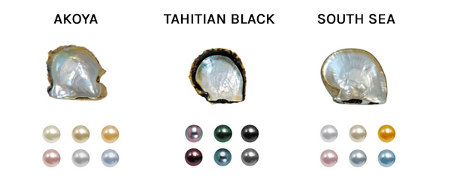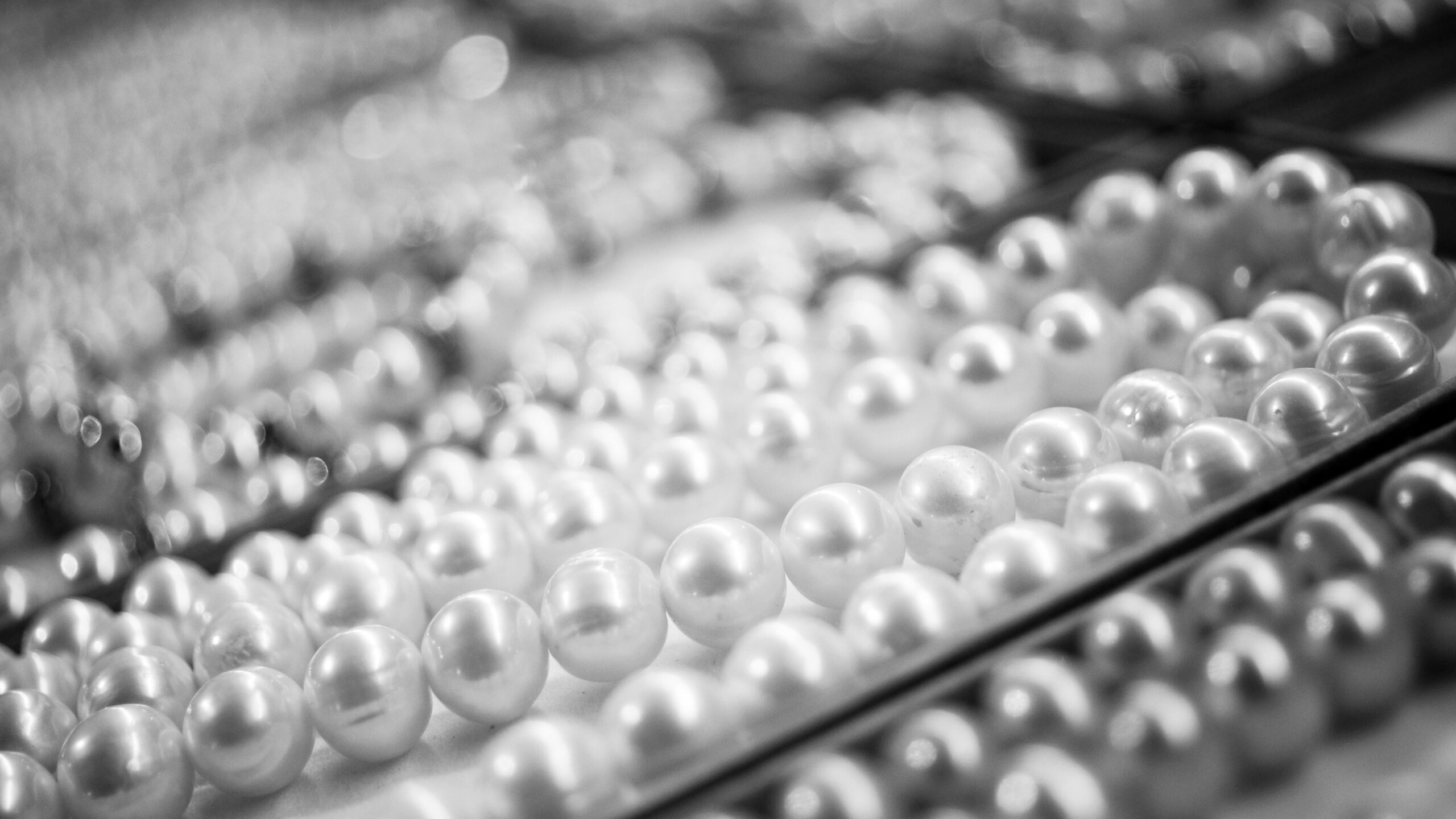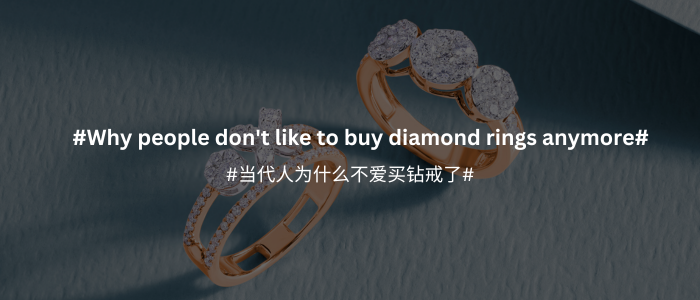Pearls are categorized into two main types: freshwater pearls and saltwater pearls. In the first half of 2023, the pearl market in China was valued at RMB 31.09 billion. The country currently dominates the production of freshwater pearls, accounting for around 75% of the global output, primarily clustered in a few provinces. Younger consumers are increasingly drawn to pearl jewelry, with platforms like Xiaohongshu reflecting this evolving trend. The pearl market’s evolution is also evident in its sales strategies, with livestreaming emerging as a dominant force. The surge in pearl demand in China, coupled with reduced supply, drove up prices for both freshwater and saltwater pearls in 2023.
Pearl sales in China increased in 2023
In 2022, retail sales of pearl jewelry in China amounted to RMB 24 billion, representing 3% of the nation’s total jewelry sales. Zhuji (诸暨), a county-level city located in Zhejiang province, serves as a good barometer for the status of the pearl market in China, given its status as a prominent center for both offline and online pearl commerce. It holds the title of “No. 1 Pearl Village in China”. In the first four months of 2023, Zhuji recorded RMB 25 billion in pearl sales, marking a 60% year-on-year increase.
Pearls bridge generational divides
Quiet luxury and the adoption of pearls by the young generation
Perceptions surrounding pearls have undergone a notable transformation, transcending their association with older women. Younger customers are showing an increasing interest in pearl jewelry, aligning with the growing popularity of quiet luxury and the Old-money style. With this trend, consumers are seeking pieces that embody timeless elegance and sophistication, akin to the pearl accessories favored by Princess Diana and the Princess of Wales. As a result, pearls are no longer confined to a specific age group but are embraced as symbols of refined taste across generations.
Xiaohongshu style: how to wear pearls with a modern twist
On Xiaohongshu, posts about pearls offer tips on wearing pearl accessories while avoiding the risk of looking “old”. The posts showcase how to best pair pearls with various clothing items such as collared shirts and t-shirts, often using celebrities as inspiration. Some posts even feature male celebrities like Jackson Wang and Dylan Wang wearing pearl accessories, breaking free from the conventional perception of pearls as exclusively feminine accessories.

Pearl market livestreaming in China takes center stage in Zhuji
In China, pearl markets like the Hongqiao market in Beijing and the Zhuji pearl market in Zhejiang have multiple floors with thousands of sellers offering a wide array of pearl products, ranging from jewelry to unmounted pearls. Moreover, pearl sales in Zhuji amounted to over RMB 6 billion in 2022. Furthermore, for the first four months of 2023, Zhuji generated RMB 25 billion in pearl sales, which is a 60% YoY increase.

While traditional selling modes were popular in the past, now sellers are turning towards livestreaming, which accounts for two-thirds of total sales revenues. Using Taobao Live, Douyin, or Kuaishou, livestreamers have different ways to engage their audiences. The Zhuji pearl market, spanning 160,000 square meters, has 2,400 stores and over a hundred live broadcast rooms. The market hosts over 7,000 broadcasts daily, solidifying its position as a pivotal hub in the pearl market in China.

China leads the global production of freshwater pearls
Freshwater pearls, derived from freshwater mussels, are formed quicker than saltwater pearls but have lower quality and luster, making them more affordable. They also come in a wider variety of colors and are longer lasting than saltwater pearls. Whereas saltwater oysters can produce one or two pearls at a time, freshwater mussels can produce 20-40 pearls. Freshwater pearls appeal more to younger buyers because of their youthful look and affordability.
Zhuji leads China’s freshwater pearl production
Besides being a major hub for pearl sales, Zhuji contributes to 73% of the world’s freshwater pearl production in 2024, and 80% of China’s freshwater pearl production. Freshwater pearls are also cultivated in other regions of China, including Jiangsu, Jiangxi, Hubei, and Anhui. Notably, Duchang County (都昌县), located in Jiangxi province, is renowned for its freshwater lakes and is an important freshwater pearl production center in China.

Environmental policies spark price hikes for freshwater pearls
Between 2015 and 2020, China witnessed a notable decline in freshwater pearl cultivation. It was partly due to the closure of some breeding farms and the discontinuation of environmentally harmful breeding methods. In 2015, local freshwater pearl production reached 1,795 tons. By 2020, this figure plummeted to 454 tons, marking a decrease of approximately 74.7%.
Concurrently, the rapidly increasing price of saltwater pearls created a demand for freshwater pearls. The decreasing supply and increasing demand for freshwater pearls led to a surge in prices of freshwater pearls. For example, the price of white rice pearls, a type of freshwater pearl, rose from RMB 4,000-6,000 per kg to RMB 9,000 – 12,000 per kg from 2021 to 2023, a 110% increase.
China’s saltwater pearls are navigating decline and quality concerns
China’s coastal gems
Saltwater pearls, originating from saltwater oysters have a longer formation process. Besides, they have a higher quality and luster compared to their freshwater counterparts. They are also more expensive. Saltwater pearls account for around 40% of pearl sales in China, including Akoya pearls, Tahitian black pearls and South Sea pearls, each with their distinct look. Saltwater pearl production in China primarily occurs in the provinces of Guangdong, Guangxi, and Hainan, with a significant focus on cultivating Akoya pearls.

China’s saltwater pearl production faced a declining trend
China’s saltwater pearl output has faced a downward trend. In 2015, the production surface area for saltwater pearls in China stood at 3,108 hectares. By 2020, this area decreased to 1,811 hectares, reflecting a decline of approximately 41.8%. Moreover, pearl merchants reported that Japan’s recent discharge of nuclear-contaminated water into the sea triggered “pearl-grabbing”. Worried by the future quality and quantity of saltwater pearls, customers are rushing to buy them. The supply decrease and “pearl-grabbing” have contributed to the important price increase of saltwater pearls in 2023. The prices have soared 2 to 3 times higher than previous levels.
Pearls of wisdom: insights into the pearl market in China
- In 2023, pearl sales in China experienced a significant increase. For instance, Zhuji alone generated RMB 25 billion in pearl sales, marking a remarkable 60% year-on-year rise.
- Traditional selling methods have been overshadowed by livestreaming platforms, which now contribute two-thirds of total pearl sales revenue.
- Younger consumers are increasingly showing interest in pearl jewelry. This aligns with the growing popularity of quiet luxury and the incorporation of pearls into modern fashion.
- China leads the global production of freshwater pearls, accounting for around 75% of the global output. This production is primarily concentrated in select provinces.
- Environmental policies have contributed to a surge in prices of freshwater pearls. Additionally, saltwater pearls experienced a price increase in 2023 due in part to the reduction in cultivation volume.
Contact us for valuable insights into China’s luxury goods market
In the promising Chinese pearl market, precise market understanding and strategic insight are key to gaining a competitive advantage. Daxue Consulting provides targeted China market research and in-depth consumer analysis, allowing your business to effectively respond to evolving trends and consumer preferences within the pearl industry. By partnering with us, you’ll benefit from cutting-edge strategies that align with both market demands and your business objectives. Reach out to us to transform insights into action and drive your business forward in China’s thriving pearl market.
Download our China luxury market report







